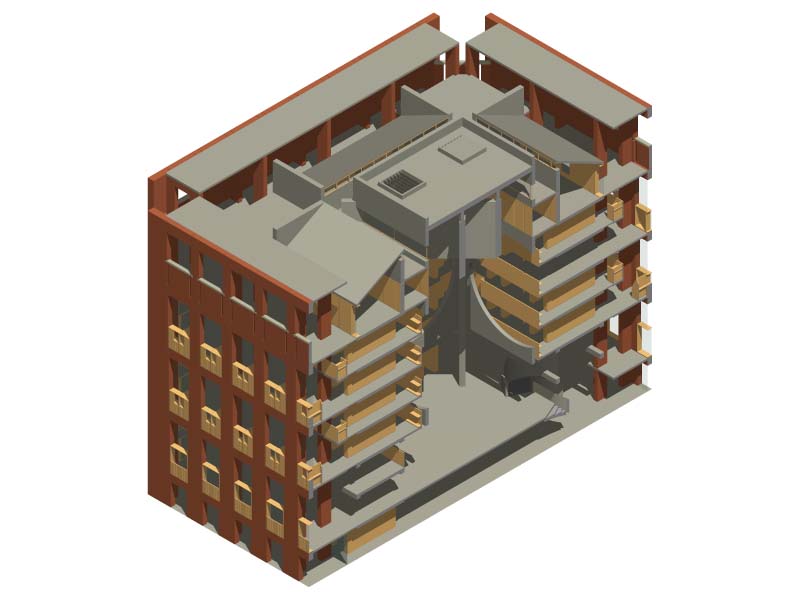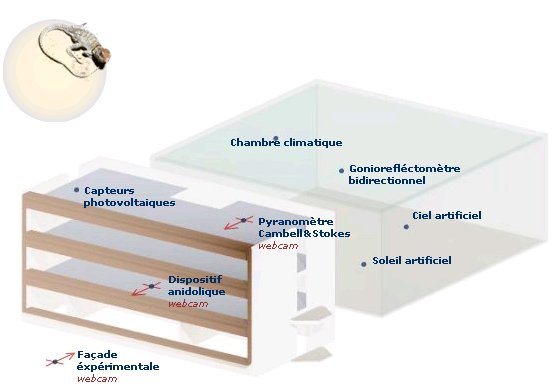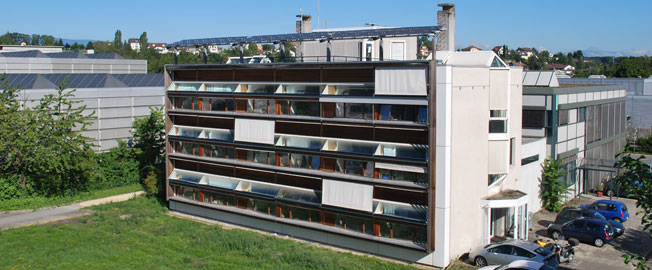 |
 |
The experimental solar building LESO built in 1982 constitutes one of the main research tools of the Solar Energy and Building Physics Laboratory.
The building has a very low specific energy consumption (energy performance indicator of 200 MJ/m2 year), achieved thanks to the efficient thermal insulation of the envelope (U = 0.4 W/m2 K), the building’s efficient passive solar energy use (main glazed surfaces south exposed) as well as its thermal inertia (inner walls made of concrete and cement blocks).
About twenty passive solar and hybrid systems have been tested on this buiding. The roof integration of a 3 kW-peak photovoltaic solar power system in 1990 has allowed to show the affinity between this decentralised kind of power generation and the building.
The south facade, which was renovated in 1999, shows an even better energy performance (integrated daylighting system) and its low environmental impact (90% local materials with a low grey energy content and greenhouse gas emission neutral).
